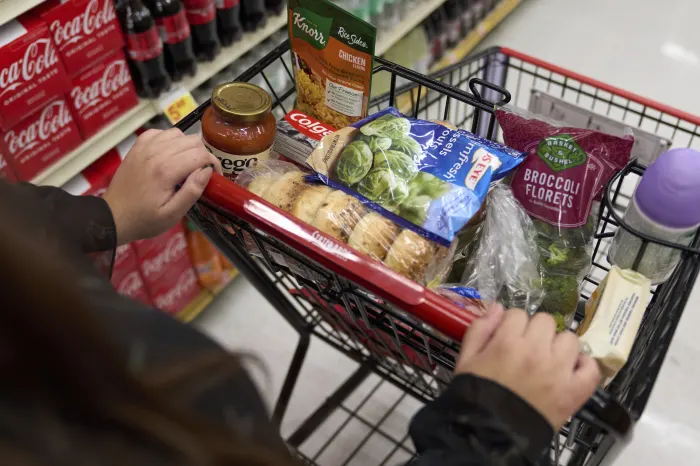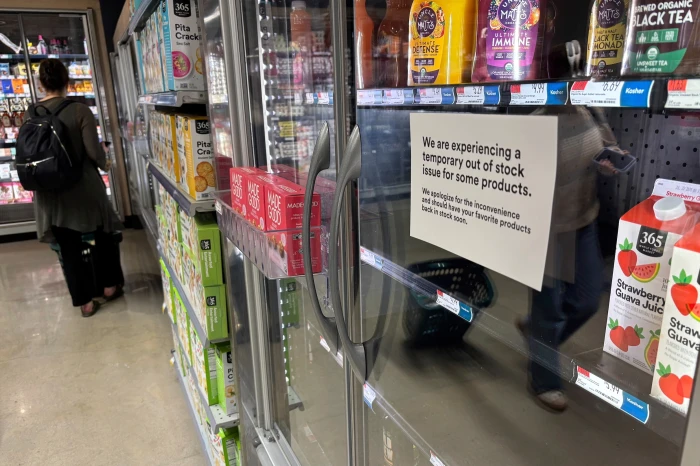
There is still sticker shock at the grocery checkout counter? If you are feeling the gut punch, you’re not alone. Grocery bills have been on the rise, leaving many of us wondering why our money doesn’t go as far as it used to. Understanding the factors behind these rising costs is the first step to taking control and making smarter choices.

The Reasons Behind High Grocery Costs
Several interconnected factors contribute to the higher prices you see on the shelves. It’s not just one thing; it’s a perfect storm of global and local issues.
Inflation
One of the biggest culprits is inflation. This is the general increase in the prices of goods and services over time. When inflation is high, the purchasing power of your money decreases. The cost of everything—from the fuel used to transport food to the labor required to harvest and process it—goes up, and these costs are passed on to consumers.
Supply Chain Disruptions
Recent years have seen significant supply chain disruptions. Events like the pandemic, geopolitical conflicts, and extreme weather have made it harder to get products from farms to grocery stores. When the supply of a product is limited, its price naturally increases due to the basic economic principle of supply and demand.
Climate Change and Extreme Weather
Climate change is having a direct impact on food production. Droughts, floods, and other extreme weather events can destroy crops and reduce yields. For example, a severe drought in a major agricultural region can dramatically increase the price of staples like wheat or corn.

Photo Courtesy of AP
Labor and Transportation Costs
The cost of labor and transportation has also risen. Higher wages for farm workers, truck drivers, and grocery store employees, along with the increased price of fuel, all contribute to the final cost of your food. These are essential parts of the food production and distribution process, and any increase in their cost affects the price you pay.
How to Take Control of Your Grocery Bill
While you can’t control global economics, you can control how you shop. By adopting some smart strategies, you can significantly reduce your grocery spending.

Plan Your Meals and Make a List
This is arguably the most effective way to save money. Planning your meals for the week helps you buy only what you need. Before you head to the store, check your pantry and fridge to see what you already have. Then, create a detailed shopping list and stick to it. This prevents impulse buys and food waste.
Shop with a Strategy
Don’t just wander the aisles. Go in with a plan.
* Compare prices: Check the price per unit on different brands to find the best value.
* Buy in bulk: For non-perishable items you use frequently, buying in bulk can be cheaper. Just be sure you’ll use it all before it goes bad.
* Don’t shop hungry: Shopping on an empty stomach makes you more likely to buy unhealthy snacks and items you don’t need.

Photo Courtesy of AP
Embrace Store Brands and Coupons
Many store-brand products are just as good as their name-brand counterparts but at a lower price. Don’t be afraid to try them out. Additionally, take advantage of digital and paper coupons, store loyalty programs, and weekly flyers. These can offer significant savings on the items you already plan to buy.
Reduce Food Waste
Food waste is like throwing money away. The average American family wastes about 30% of the food they buy. Here’s how to combat it:
* Proper storage: Learn how to store fruits and vegetables to keep them fresh longer.
* “Use it up” meals: Get creative and make meals with the ingredients you have left at the end of the week.
* Repurpose leftovers: Don’t let cooked food go to waste. Pack it for lunch or reinvent it into a new meal.
By understanding why your grocery bill is so high and implementing these practical tips, you can regain control of your food budget. It’s not about sacrificing quality or enjoyment; it’s about shopping smarter and more efficiently. Happy saving!
MUST READS
AI is Revolutionizing Radio, Television and Movies – News Talk Florida

Viorica Bruni Editor Athletica Sports
Content Creator Collective Audience Media












